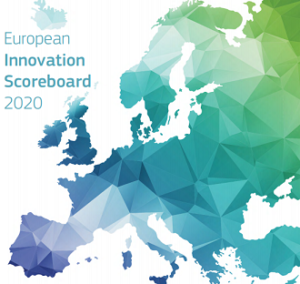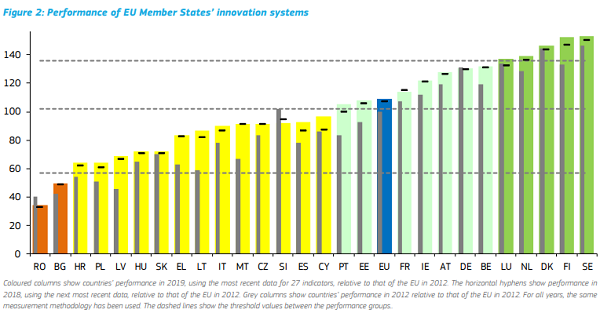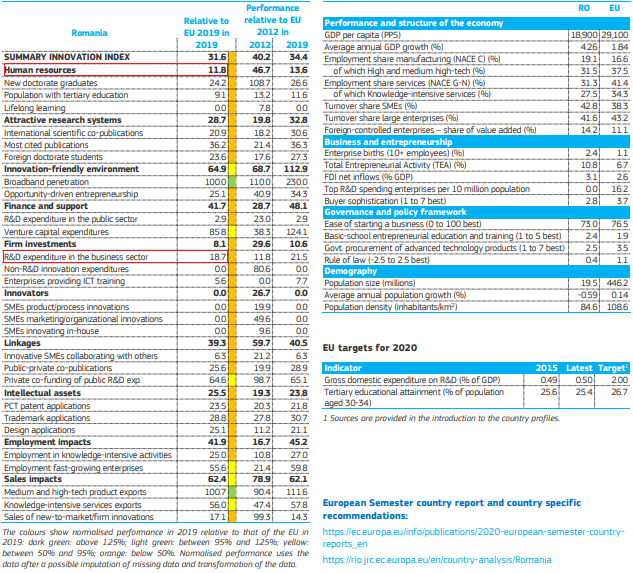 Romania remains the weakest innovator in the EU, with a score in last year’s indicator ranking at only 31.6% of the EU’s average performance, according to 2020 Innovation Scoreboard. Our country is the only Member State with a gap of over 60% compared to the EU average.
Romania remains the weakest innovator in the EU, with a score in last year’s indicator ranking at only 31.6% of the EU’s average performance, according to 2020 Innovation Scoreboard. Our country is the only Member State with a gap of over 60% compared to the EU average.
In the previous ranking, Romania had an innovation index of 31.4%, which shows that it will take many years for our country to progress in recovering the gap and reaching the level of important innovators in the former communist bloc.
Statistics on European Innovation show that Romania is also still far from its own performance registered in 2012 – if we had related 2019 results to the EU average in 2012, the indicator would have been 34.4, compared to 40.2, the level registered then compared to the EU average.
Romania is accompanied in the group of modest innovators (with an index of less than 50) only by Bulgaria, but far from this country which recorded 45.4% of the EU average performance:
While the EU average increased by almost nine percentage points compared to 2012, Romania’s performance decreased by 5.7 percentage points, being surpassed in this respect only by Slovenia (minus 9.9 percentage points).
In fact, between 2012 and 2019, 24 Member States improved their performance and in only three cases did the gaps increased. The third state is Germany, a strong innovator, whose performance compared to the EU average fell by 0.4 percentage points.
The main problems of innovation in Romania: human resources and research investments of private companies
Romania’s big handicaps are human resources, companies’ investments in research and development, indicators where Romania is far behind the states from the penultimate position:
In terms of lifelong learning, Romania scores 0% of the EU average, and in terms of exports of knowledge-based services – only 56% of the EU average.
The other three indicators with a 0 performance:
- SMEs with product and process innovations
- SMEs with marketing or organizational innovations
- SMEs innovating in-house
National data show even more worrying in terms of the deterioration of sub-indicators:
- the number of researchers decreased by 4.6% compared to 2017
- investments of private companies in Research, Development and Innovation (RDI) activities decreased by 51% compared to 2011
- the number of SMEs involved in the innovation process by 42.5%, compared to 2011
- governmental financial allocations for RDI activities increased to 0.26% of GDP in 2015, after which decreased to 0.18% in 2018 and 2019.
Europe – before the USA, but after Japan, South Korea and Australia
At the global level, for the second year in a row, Europe’s innovation capacity exceeds the United States, but it is losing ground to South Korea, Australia and Japan. China is catching up quickly and will soon surpass the US.
Sweden continues to be the EU’s innovation leader in 2020, followed by Finland, Denmark and the Netherlands.














